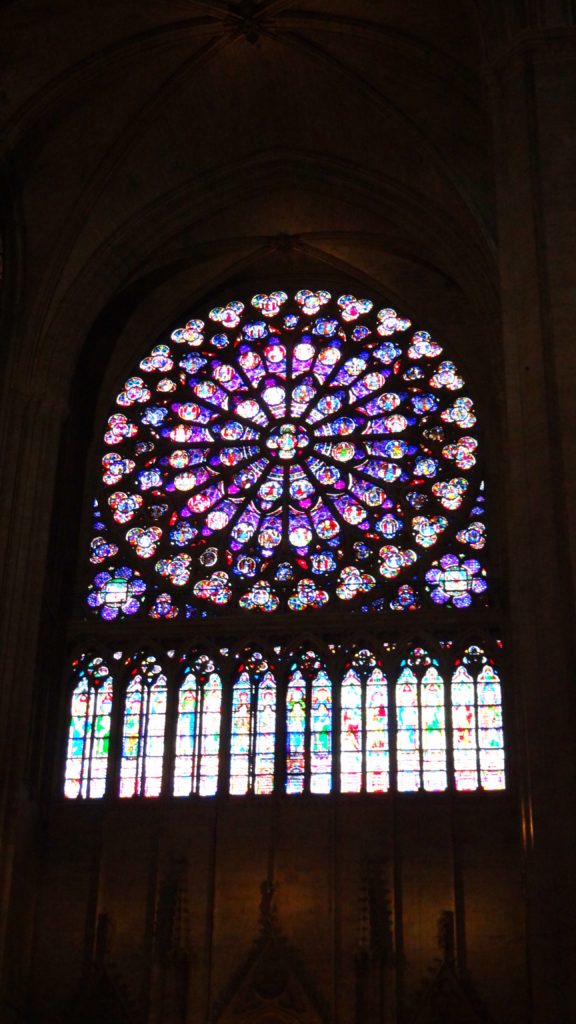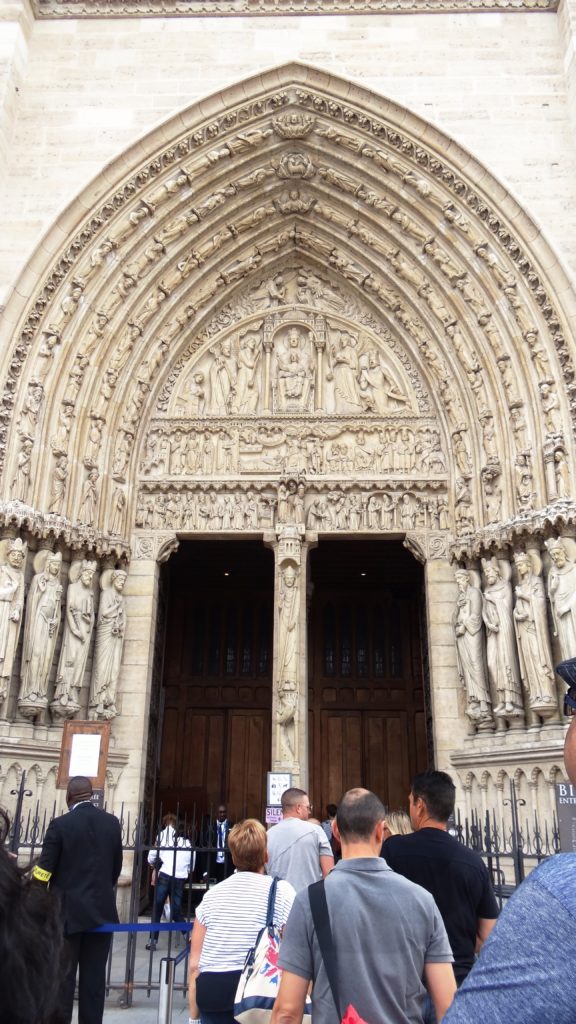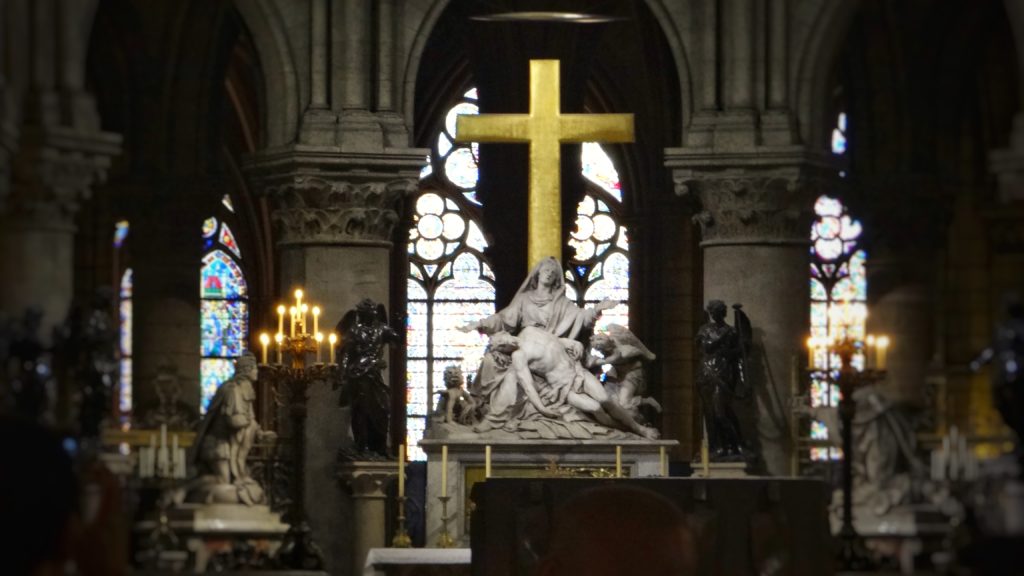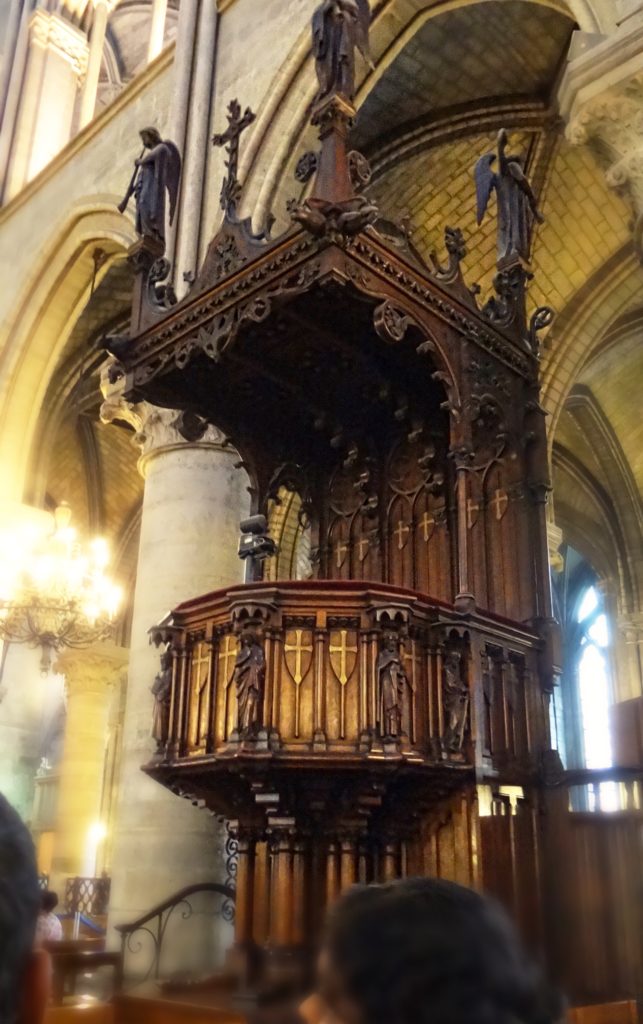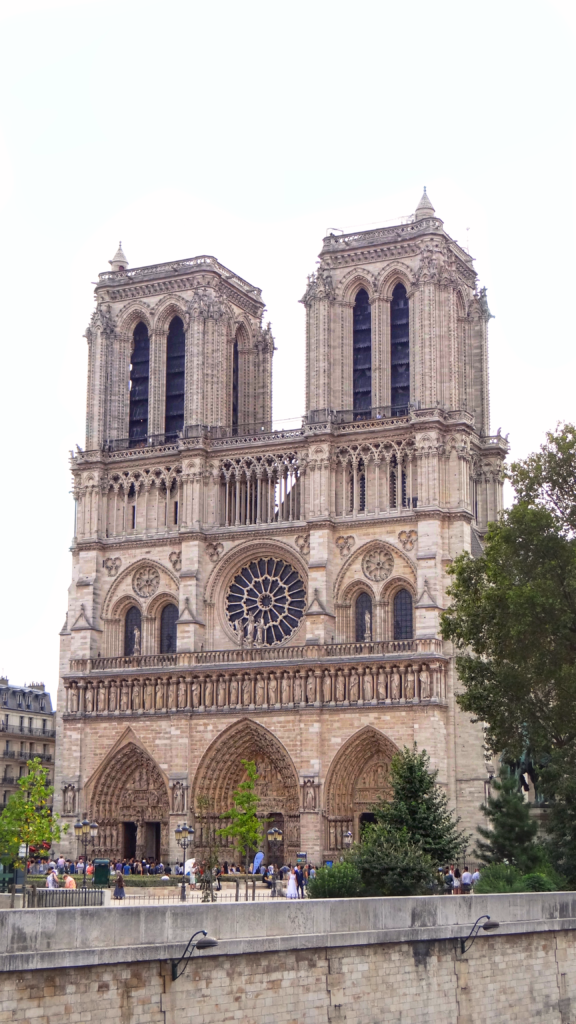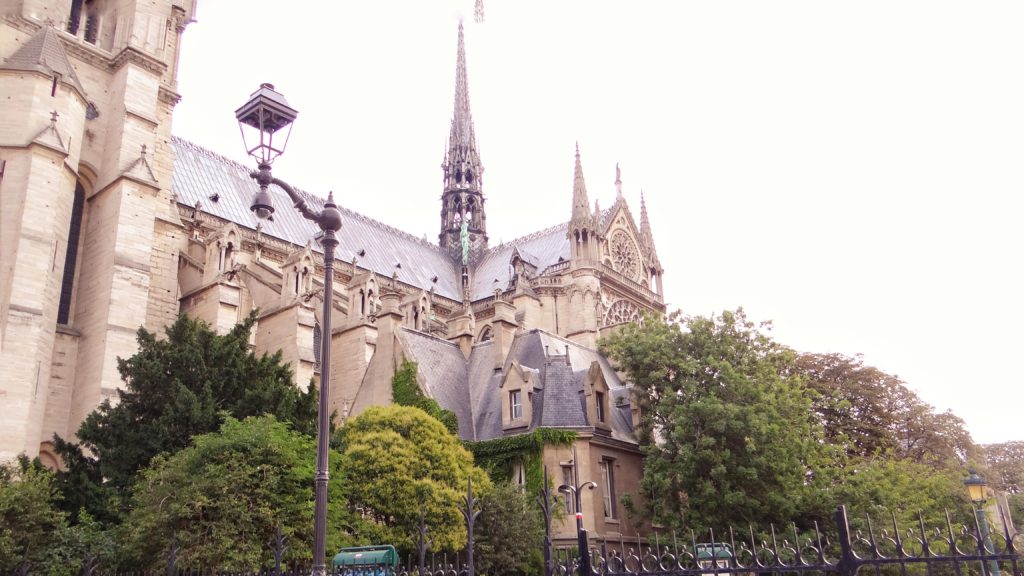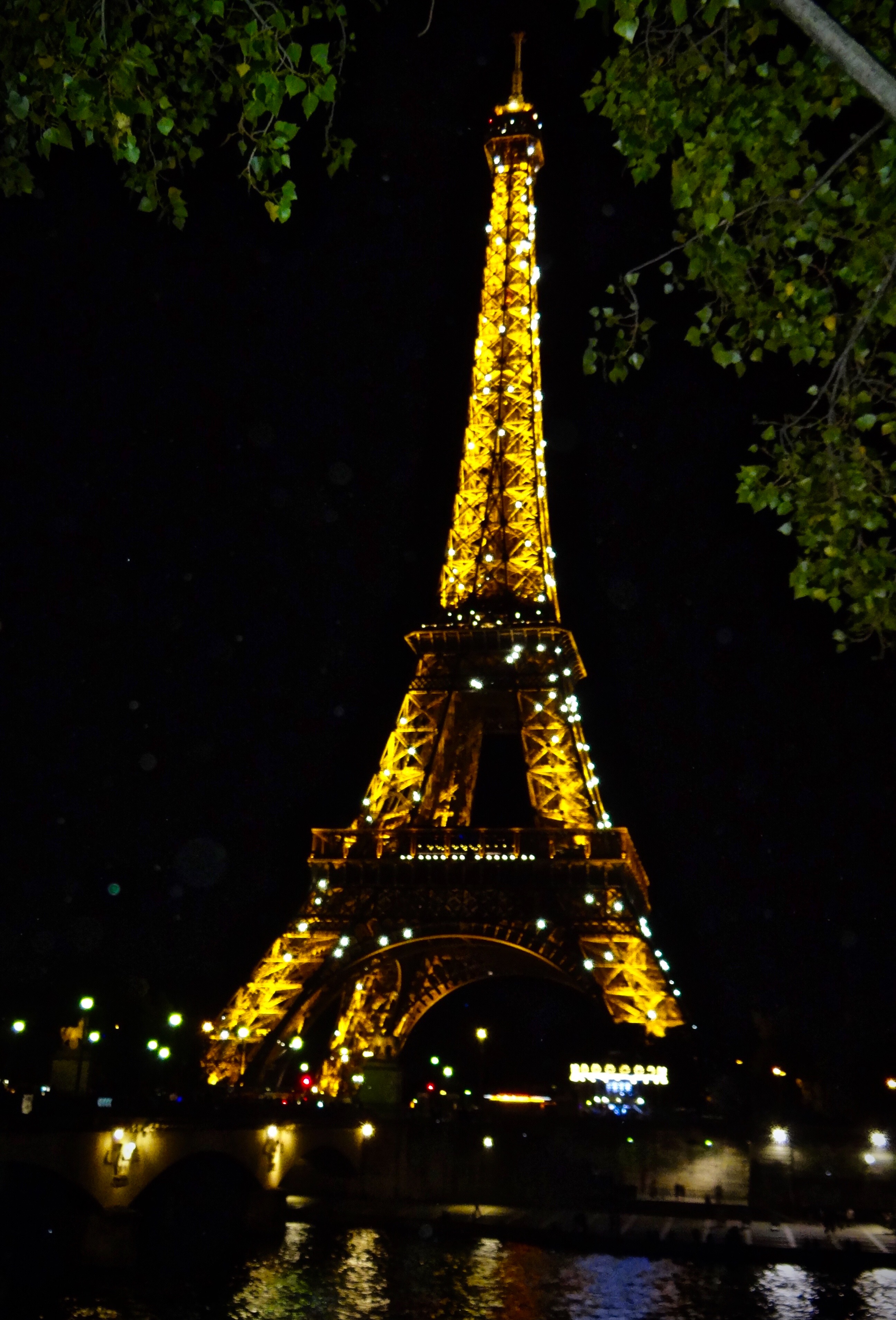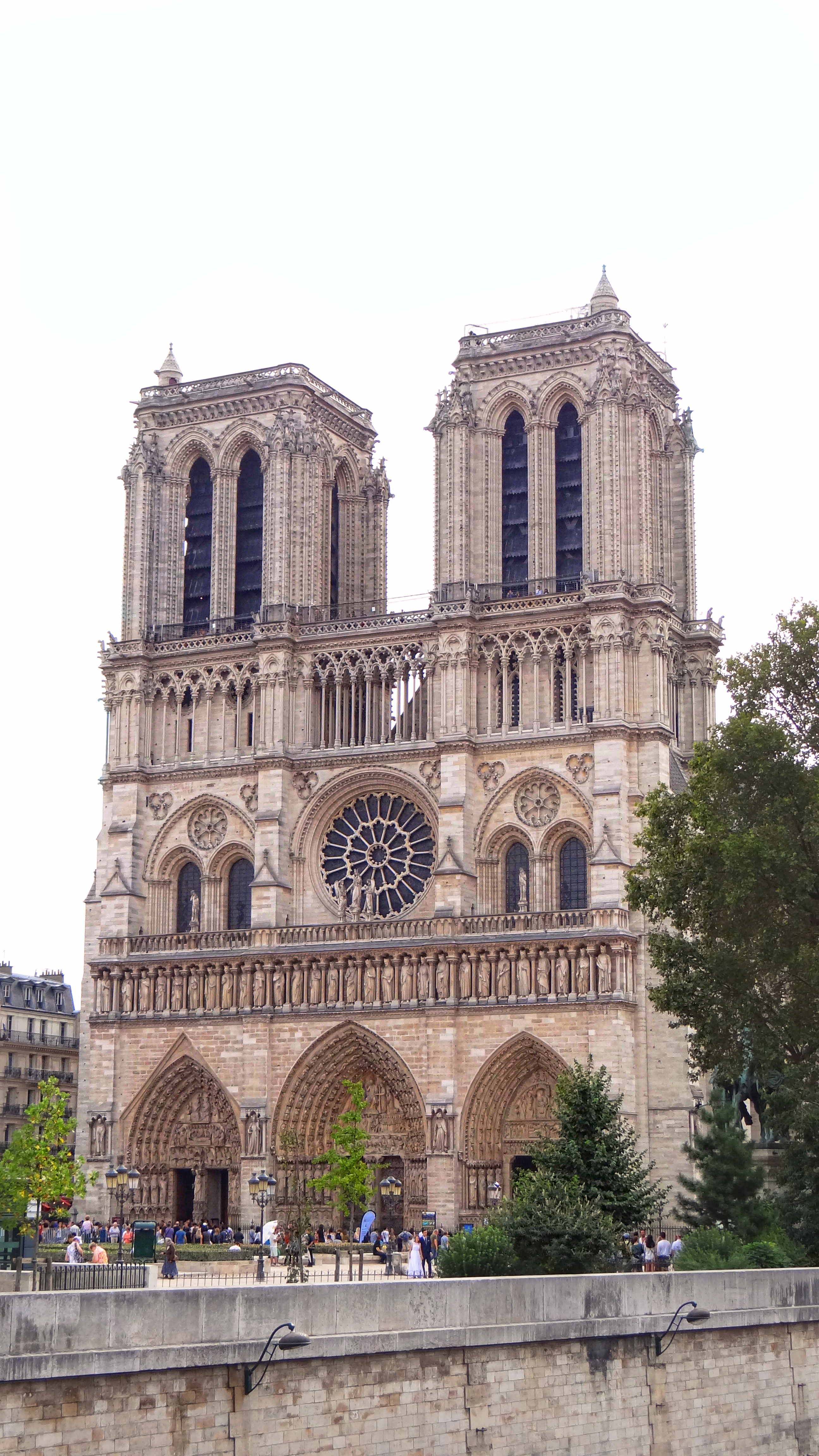
Notre Dame de Paris: A Brief History
Chiming Bells of the Notre Dame de Paris
Discover the long 850 year old history of the Notre Dame Cathedral
There is something in the delicate Rose Window and the Gothic details that puts the Notre Dame Cathedral on a pedestal, a step above France’s other monuments. This cathedral doesn’t have the charm of the Eiffel Tower or the sturdiness of the Louvre Palace.
Once you step inside, you’ll be raptured with its ancient aura, a place where time seems to have stood still. And yet, Notre Dame has evolved through its rich history. It has seen generations pray and weathered countless storms. To keep itself from drowning in the drain of obsolescence, it has adapted sitting in the centre of Paris.
This fascinating cathedral sits on the Île de la Cité, an island in the heart of Paris. This island has been formed by the work of the River Seine. This river dominates the French capital and gives us its romantic promenades.
Stepping inside Notre Dame, the history that lives within its walls slaps you in the face. I remember thinking to myself about the stories that would have unfolded. Today I have answered that curiosity. What is the Notre Dame’s history? We shall explore it in this article.
Before we breeze in to do just that, let me first ask you….
Why is the Cathedral of Notre Dame so famous?
Notre Dame might be included in your tour guide’s itinerary or in the City tour. However Notre Dame isn’t famous for its inclusion in the city tours. Its popularity might lie with one of history’s famous writers and poets, Victor Hugo.
In 1841, Victor Hugo wrote a novel titled the Hunchback of Notre Dame. This tragic romantic story became very famous and its this story most people resonate Notre Dame with.
About 3000 miles away and a solid century between us, the Hunchback of Notre Dame was never a part of my novel repertoire. I for one, am not a fan of tragic dramas.
What made Notre Dame so familiar to me was my enthusiasm to see the Paris I had studied about in my French textbooks.
I never could have guessed, that the history in this very cathedral would also appeal to me.
How old is the Notre Dame?
The Notre Dame Cathedral’s history is really old, like 856 years old!
The construction of a church began in 1163. It took them almost 200 to 300 years to build the cathedral like we see it today. It was a major construction project.
In its 8 and a half centuries of existence, there is so much that’s happened within the cathedral’s walls.
The city of Paris grew around it into the modern metropolis we enjoy today. The precious Crown of Thorns, believed to have been worn by Christ, was once kept in Notre Dame for safekeeping. It was upon its walls, that the Third Crusade was declared and very shockingly, within its walls an English King was crowned. The French revolution also left, thankfully so, an erasable mark and the World War with its hope, rage and agony brought the Nazis.
Just imagine the stories this cathedral has to narrate!
To hear these stories let’s step back to the 12th century.
Why was the Notre Dame Cathedral Built?
On the Île de la Cité in the 12th century, there stood a Royal Palace. It was the official home of the French royal family. Today the Palais de la Cité is a Law Court on the banks of the River Seine.
With the Royal Palace on the island of the City, the surrounding populace also grew. 3000 people live and worked in the Palace. Île de la Cité was where you wanted to be in the 12th century, it was the happening place.
History of the Notre Dame Cathedral
When Maurice de Sully became the Bishop of Paris in 1160, he decided that the city of Paris needed a cathedral which would suit it. A cathedral which was a modern specimen.
The Bishop proposed a major renovation plan. This plan included the construction of the Notre Dame cathedral instead of the old Saint-Étienne.
The work began in 1163 and would take centuries to complete.
In 1242 King Louis IX built a chapel within the Notre Dame cathedral to house the Relics he had brought back with him from the Holy Land. From these relics, the Crown of Thorns was kept in the chapel at Notre Dame Cathedral.
These Holy Relics weren’t meant for Notre Dame though and were transferred to the Saint Chapelle Cathedral after its construction was complete.
Did You Know: The Crown of Thorns, now without its thorns, is maintained in the Notre Dame Cathedral’s treasury. You can see as well as worship it on the first Friday of every month and every Friday during Lent
During those early centuries, the architecture of the Notre Dame might have taken the locals and tourists by shock. Notre Dame was one of the first cathedrals to be built in the Gothic architecture. It’s stained glasses, larger than life arches and decoration was something unseen and new.
How Long Did it Take to Build Notre Dame?
I like to think the Notre Dame is a cathedral under construction. The officials don’t agree with me though. If you go by the records, they took almost 300 years to complete the Notre Dame cathedral to its last detail.
What construction has taken place since is purely of a maintenance nature.
The construction was planned in four phases.
They started with the crucial bit first. The choir with an ambulatory (a covered passage) skirting it was the highlight of the church.
The work then progressed away from the nave and came to a close when the facade of the cathedral with its gorgeous Rose Window was put up.
These four stages were completed by 1250.
After this, the rest of the years in the 13th as well as 14th century saw the addition in the essential and finer details.
The chapels were arranged, the choir was hidden behind a rood screen, and the most iconic element of a Gothic structure, the flying buttresses were added.
Despite being completed in the 14th century, the church was in need of restoration by the 17th.
The French revolution had brought the mob in with their weapons and a heart set on destroying everything that spoke of Kings. They beheaded the statues thinking they represented the doomed Monarchy of France. These statues were of Kings from Judah but they were ransacked by the ill-informed crowd.
The 1700s were not a good time for Notre Dame. The Cathedral was chiefly forgotten. Its 600 year walls began to crumble.
Despite its pitiable state, Napoleon Bonaparte decided to crown himself Emperor of France here. The cathedral briefly saw the limelight as France officially welcomed its new emperor in 1804.
And it was again cast into darkness until Hugo’s Hunchback rescued Our Lady in 1841. This novel by Victor Hugo gained so much popularity that it implored the government to shell funds and restore a dying Notre Dame.
Eugène Viollet-le-Duc and Jean-Baptiste Lassus took up the mantel to carry out a major restoration project.
When his partner died, Viollet-le-Duc carried out the work himself.
About 15 sculptors worked to restore the damage.
Viollet-le-Duc elevated the new sacristy (the room in which the priest prepares for Mass). He added new glazing to the glass and restored the Great Organ.
The murals in the chapels, the furniture, the treasury and so many other elements had to be redone. It was, after all, the undoing of two centuries of damage.
The restoration proved to be a boon for the survival of Notre Dame.
In 1965, Jacques Le Chevallier was appointed to replace the plain glass of the windows flanking the nave with stained glass. This stained glass would have coloured the hallowed halls in the 13th century. It is almost magical to see this glass today, creating colourful patterns and bringing Biblical stories to life.
Even today, Notre Dame apparently finds it difficult to receive sufficient funds to restore and maintain its precious artefacts and structure. The government helps with major funding along with a special organisation called Friends of Notre Dame de Paris.
It is thanks to them that one of Paris’ iconic buildings stands as firm as it did 850 years ago.
When you visit Notre Dame de Paris, have a close look at the structure. As you gaze upon this imposing monument on the island of Île de la Cité, you must notice the gargoyles that seem to spring out from the cathedral’s walls.
Why are there gargoyles for?
Gargoyles have the important job of draining rainwater from rooftops of buildings. You can call these gargoyles well decorated drainage pipes. They are often built to represent a real of mythical creature.
The gargoyles at Notre Dame have played a vital role in protecting the cathedral. These gargoyles are tall and can thus spit the saturated rain water away from the walls of the structure preventing a possible erosion.
Ingenious, isn’t it?
That’s how smart old architecture was. It was an appreciation of art with the smallest of details crafted to perfection. The Notre Dame de Paris is no less.
This cathedral continues to welcome hoards of tourists with awe on their faces and a curiosity in their minds.
If you ever travel to Paris, visit the Notre Dame.
And of course, explore more of Paris. Maybe these articles might help you
The Parisian Charm: the Eiffel Tower
The Palace of Versailles: A History
And across the channel…..
And you could probably stay in touch with email here (I send an update every Saturday)





